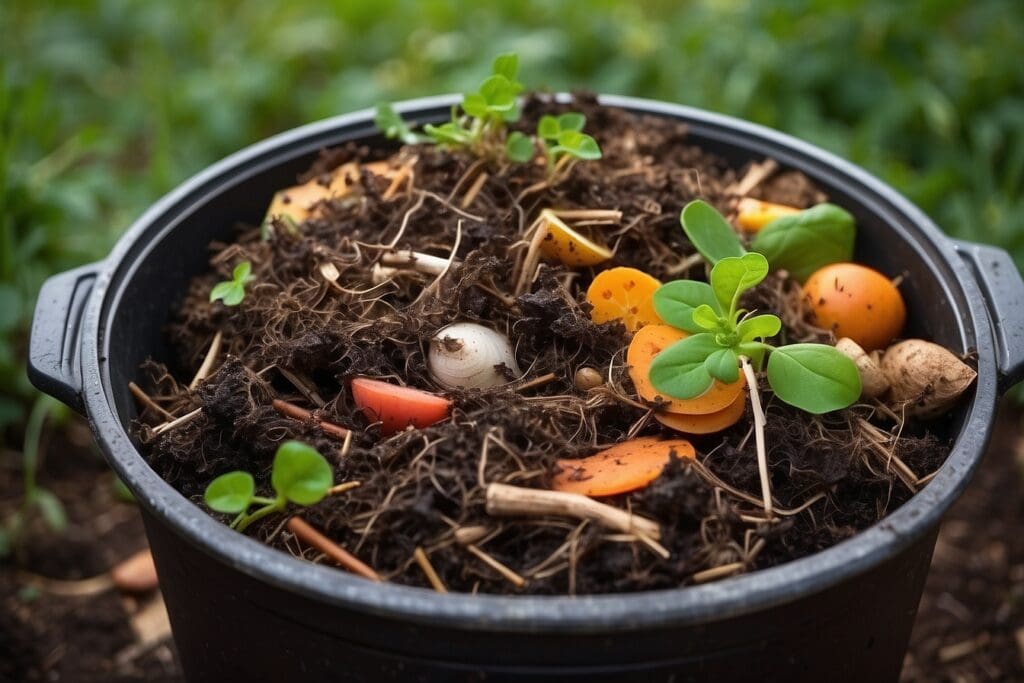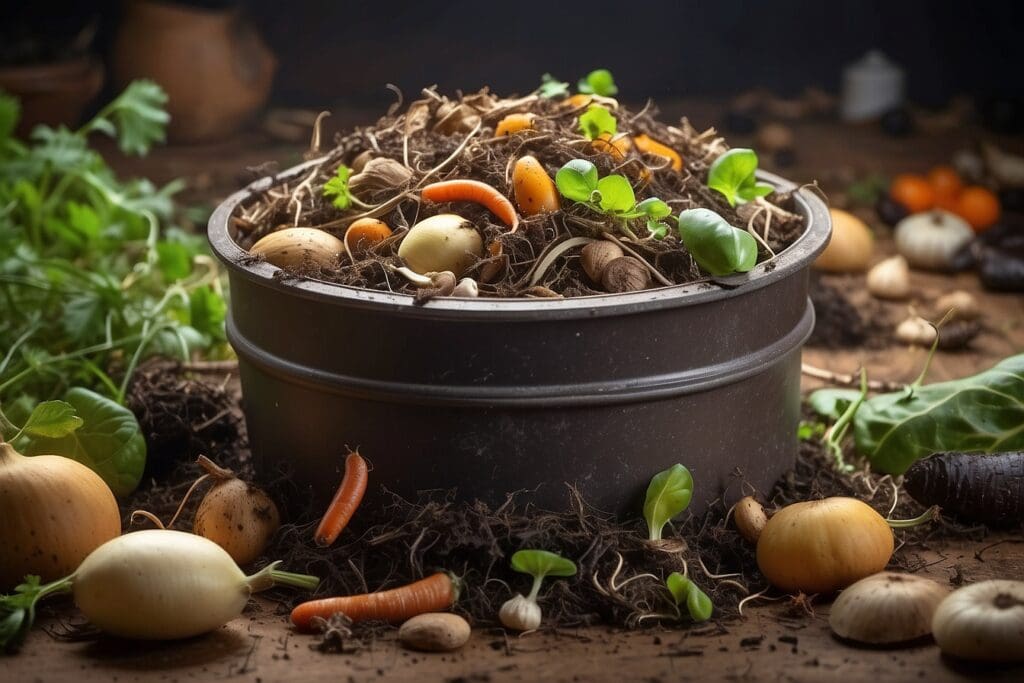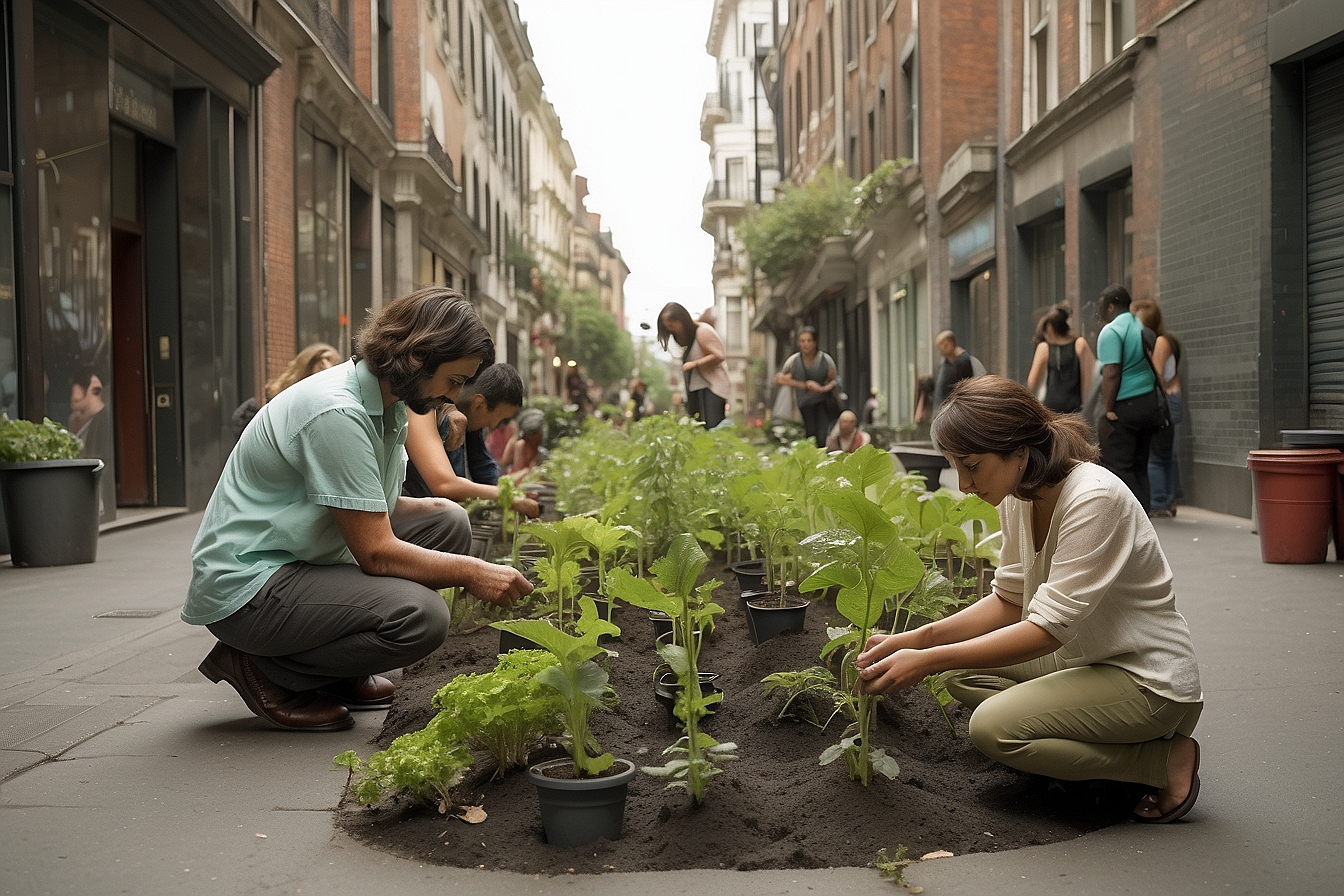Why Compost?

In order to answer this question, we must first answer the question: why recycle at all? The Air Defenders’ Glossary defines recycling as “Physically or chemically changing an item into a new item for reuse.” Composting can be considered a form of recycling. After all, the plant matter in a compost pile undergoes both physical and chemical changes in the process of becoming a new, usable product. We recycle soda cans so as to keep them out of landfills, and we recycle our compost materials for the same reason. Although compost materials, unlike soda cans, are biodegradable, they still can take up precious landfill space and take energy to transport to the landfill.
Furthermore, when a gardener uses compost she has made herself, she is saving the energy it would have taken a gardening company to produce the fertilizer she would have otherwise used. She is also saving the energy it would have taken to transport that fertilizer to her home. From her perspective, it is better to use compost than fertilizer anyway, because fertilizer only provides one service to her garden: delivering additional nutrients to the soil. Compost, on the other hand, provides multiple services: adding nutrients, contributing to a healthy soil structure, increasing water holding capacity, reducing soil erosion, and attracting beneficial soil organisms, to name a few.

Now, those of you who do not have gardens are probably thinking: “Why should I read on? All this advice is geared towards people who have the time, land, money and energy to create a garden. I might as well forward this to my gardener aunt across the country and move on to reading other things that are more relevant to my life.” Well, actually, home composting can be productive for you, even if you do not have a garden. If you have a lawn, your compost can be just as useful to support that endeavor. Just spread it at the beginning of the season, as you would a fertilizer. Compost can also be used to fertilize houseplants, or you can use compost as a potting soil for starting to grow new plants, even from seed. Lastly, composting helps you reduce the frequency of taking out your trash, and saves you from dealing with a clogged garbage disposal!
But what if I don’t have a garden, a lawn, or houseplants?
You can still make valuable compost! Increasingly, cities have been taking it upon themselves to provide at least some composting services. These services can be as minimal as simply selling composting bins, or as extensive as providing residents with free biodegradable composting bags and having free compost pickup on a weekly or biweekly basis, during the growing season or throughout the entire year. Call your city or town government to find out what services it provides. Don’t forget to ask about all the different possible services that might interest you: kitchen waste pickup (most often excluding animal products), yard waste pickup, provision of bins, provision of bags, use of the compost once it is made, etc. Please see the list at the end of this article: Role Model Cities That Will Support Your Efforts to Compost!
OK, I’m convinced. Now HOW do I compost?
Home composting can always be possible and productive, no matter what the season. Even if you live in a tiny little apartment on the fifteenth floor of some building in the heart of the city, you can still have a clean, non-smelly, kitchen-based composting system that takes up very little space. The fastest, cleanest method for indoor composting is known as vermicomposting, which is composting with worms. By using worms, you can speed up the compost’s process of decay, which means that you will get to use the rich, fertile soil that comes out sooner.
For a complete guide to home composting, please refer to the Greeniacs guide, “Making Your Own Compost” at http://www.wordpress-837916-4114959.cloudwaysapps.com/GreeniacsGuides/Make_Your_Own_Compost. For your convenience, the portion on vermicomposting is included here:
Worm Composting:
Materials:
Rubber Storage Totes
Old Car Tires
Plastic Bin
Washtub
Dish Pan
Used Shipping crate
Newspapers
Cardboard
Peat Moss
1. Decide where you want your new composting bin to be located. It can go in a shady location outside, in the kitchen corner, garage, basement, patio, outside back door, or even the laundry room. Just make sure the composting bin will be able to stay within the range of 40-80° F. Although worms and compost sound smelly, there shouldn’t be any odor.
2. You can either buy a container or make one yourself. There are plenty of pre-made worm bins, but one made yourself can be just as good, as long as it has a cover and that you poke quarter-sized holes on the bottom. For a smaller container, try using one of the above containers that are only about 8″-16″ deep, and with around 2 square feet of area per person in your household. To create larger outdoor composts, you can stack 4 old car tires on top of some newspaper and cardboard. You can place a large, flat wooden board over the top and weigh it down with bricks as a lid.
3. Add bedding material, which can consist of shredded newspaper, cardboard, or peat moss, which can be more expensive. Moisten the material to the dampness of a wrung-out sponge. Then, fill the bin with bedding and a handful of soil or ground limestone. These will eventually be eaten by the worms.
4. Buy the most commonly used composting worms, which are Eisenia Foetida, or red wigglers. Otherwise, try to find Eisenia Hortensis, or European night crawlers. Look online for the nearest store that sells worms, usually a garden center or worm farm. Purchase about one pound of worms.
5. Feed your worms fruit and vegetable peels, pulverized egg shells, tea bags, stale bread, and coffee grinds. Be sure to cut up the food as much as possible so more worms are able to get into it. As you put your food scraps into the bin, try to vary its location around the bin, burying it underneath the bedding each time. Make sure to water the bin occasionally, since worms, like us, need water to survive.
6. After a couple of weeks, you can start harvesting the brown and crumbly compost. Although you can just dump the compost with worms and all onto your plants, there are methods to keep your worms in the bin. One way is to tilt the worm bin to one side so everything in there goes to that side. Then, add fresh bedding and scraps in the empty side until all of the worms go to the new side, leaving the first side worm-free. Another method is to spread out a plastic sheet on the ground, on a sunny day, and dump the contents of the worm bin on it. As the worms struggle to wriggle to the center of the pile for shade, brush away the compost off the edges of the plastic sheet.
7. You can use your compost soil for mulching, fertilizers, and potting mixes. Add a 1-inch layer all around the plants, but directly at the base of the plant. If you can’t use your compost immediately, it can still be stored for the next gardening season.
8. If you have problems with your compost, you often just need a minor adjustment. Worms dying: Worms, as living creatures, require a number of things to survive. They may need more food or bedding to eat. Or, they may be too hot, dry, or cold. These can be rectified by adding to the bin or physically relocating it to a more temperate climate.
Bin smells: There are also a couple of reasons that your composting bin smells. If there is not enough air circulation, you should add dry bedding under and over the worms and don’t add any other food for three weeks. Another major cause of odor is if there are meat-based, greasy, or pet feces in the bin, which worms do not compost. Remove these. Or, there may be exposed food that rots before the worms have a chance to get to it. In this case, bury the rotting food further under the bedding or just stop adding food so the worms have a chance to catch up.
Fruit flies: Excess food in the bin causes fruit flies to be attracted. For a while, put less food into the compost bin and bury them further under the bedding. Or, you can cover the lid of the compost bin with a plastic sheet or fabric.
Worms crawling out: Worms crawling out of the bin are a sign that the worm bin doesn’t meet their needs. They may either need more moisture or the bedding may be too acidic, in which case, stop adding citric wastes or add garden lime.
Where can I get a composting bin?
Check out local hardware and gardening stores. There are also various options for ordering an indoor composting bin online. Here are just a few:
1. NatureMill
2. CompostBins.com – http://www.compostbins.com/compost-bins/worm-composters/cascadewormfactory3traywormcomposterterracotta.cfm
3. Gardener’s Supply Company – http://www.gardeners.com/Worm+Chalet/Composting_WormBins,35-977,default,cp.html?SC=XNET8035
Enjoy your composting adventures!
Role Model Cities That Will Support Your Efforts to Compost:
http://www.sfenvironment.org/our_programs/topics.html?ssi=7&ti=6 – San Francisco
http://www.alrdesign.com/blog/2008/06/spotted-in-san-francisco-part-i-city.html – Most of Germany; Ann Arbor, Michigan; Vancouver, B.C., Canada: “yard waste” pickup every second week; Boston gives out composting bins.
http://www.westwoodkansas.org/index.asp?Type=B_EV&SEC=%7BC3988C08-14CD-4B74-9608-970A4284231E%7D&DE=%7B019114A9-FE15-4392-A179-2624503AB50E%7D Westwood, Kansas (from first week of April to last week of December)
http://stlcin.missouri.org/newsletters/articles.cfm?ArticleId=294&NewsletterId=25 St. Louis, Missouri has a place where you can drop off compost (free pickup from specific locations)
http://www.cbc.ca/canada/ottawa/story/2007/10/10/green-boxes.html Ottawa, Canada
http://www.ci.hutchinson.mn.us Hutchinson, Minnesota (They also deliver biodegradable compost bags.)
http://contest.thetyee.ca/greenyourcampbellcash/node/225 City of Victoria, California (Bicycle-powered compost pickup initiative!)





